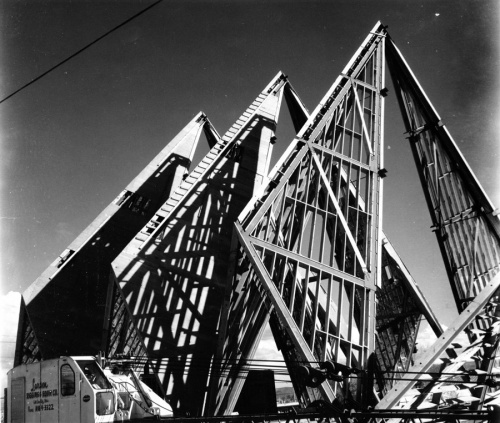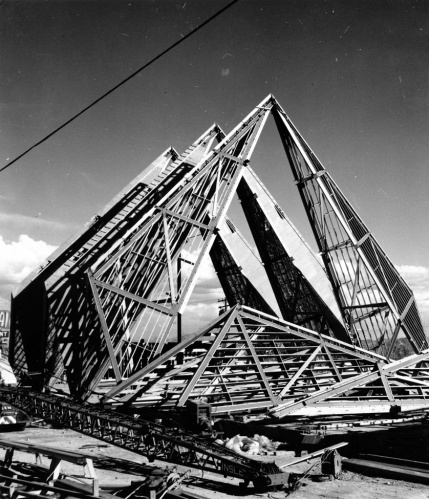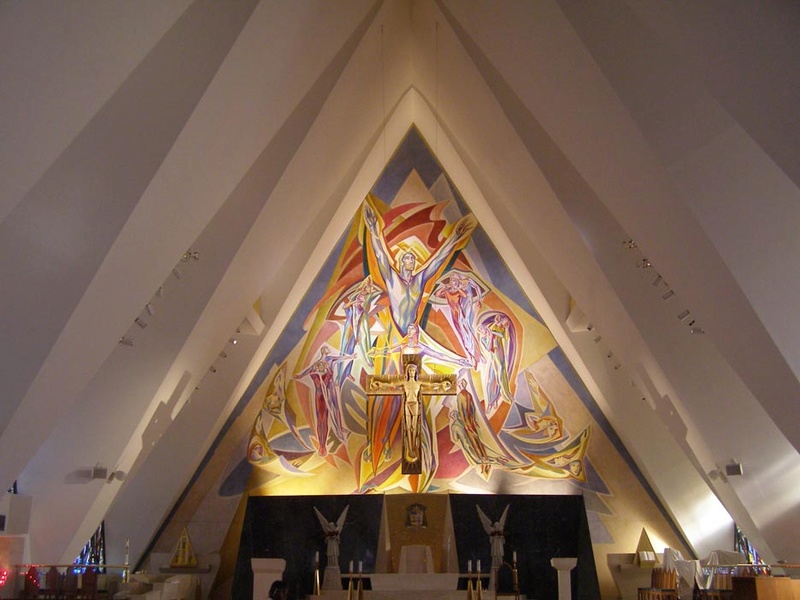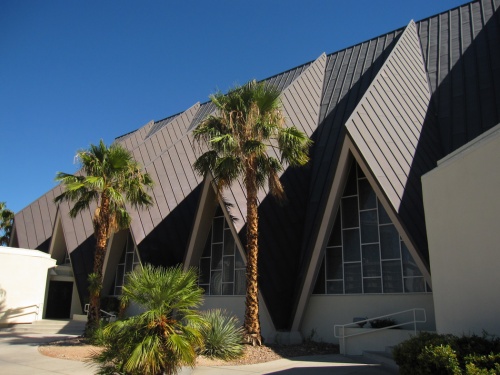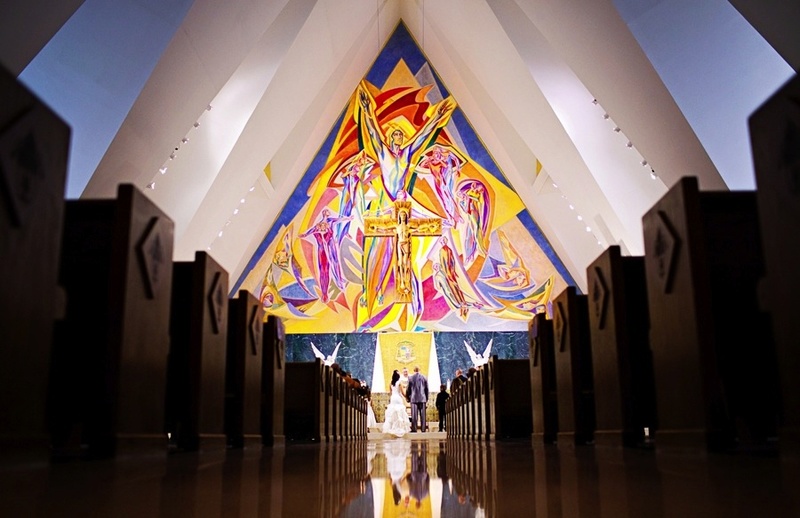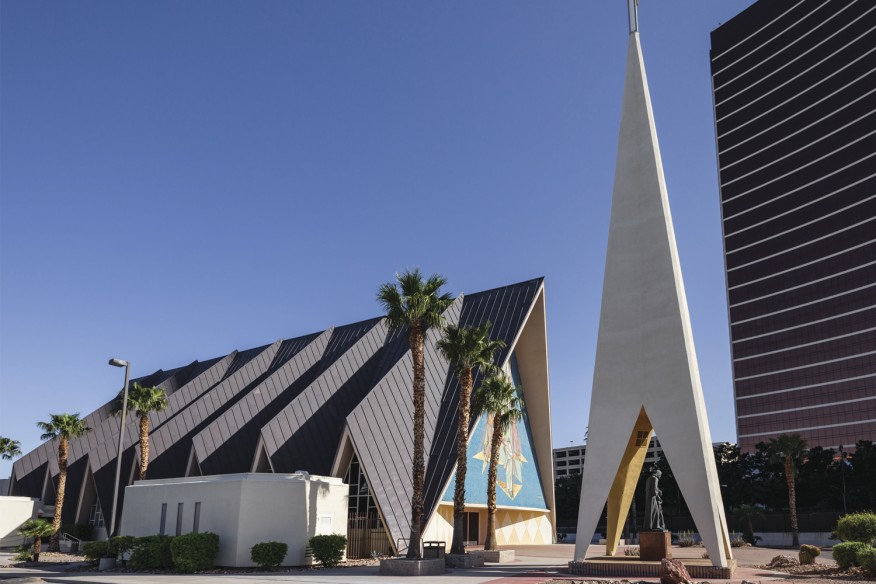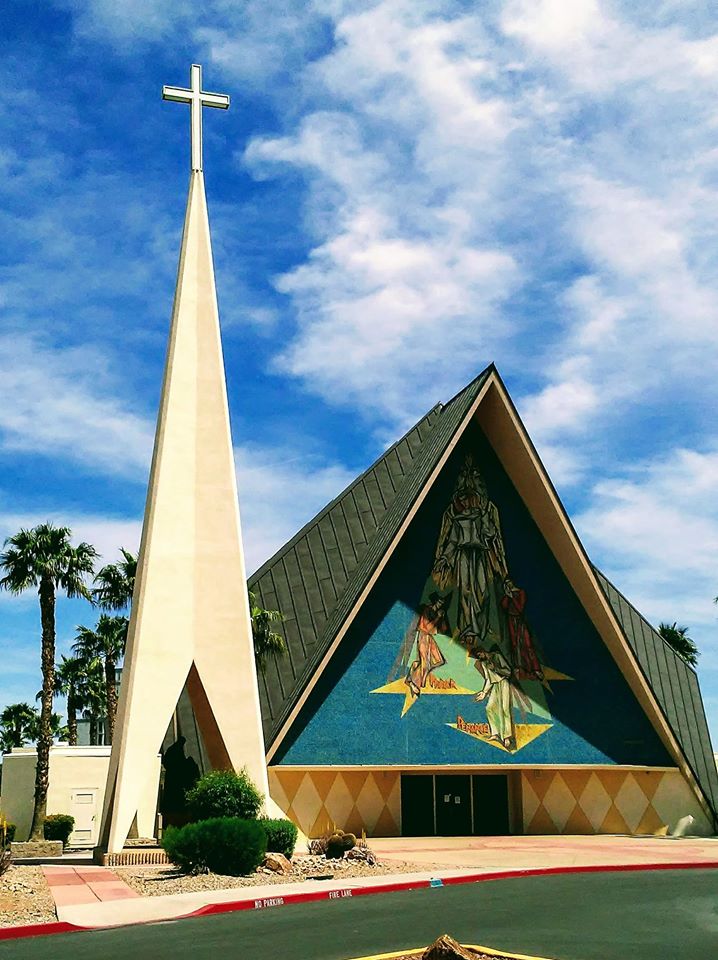Guardian Angel Cathedral - Las Vegas
Traditional Kustom Hot Rod and Vintage Culture and design :: Architecture: mid century modern, Googie, Art deco :: Church, Chappel (eglises et lieux de culte) mid century modern, googie art deco 1940 -1950 - 1960
Page 1 sur 1
 Guardian Angel Cathedral - Las Vegas
Guardian Angel Cathedral - Las Vegas
Guardian Angel Cathedral was built in 1963. For more than 50 years, the Cathedral Staff has served not only local families but also countless numbers of tourists who attend Mass weekdays and weekends throughout the year.
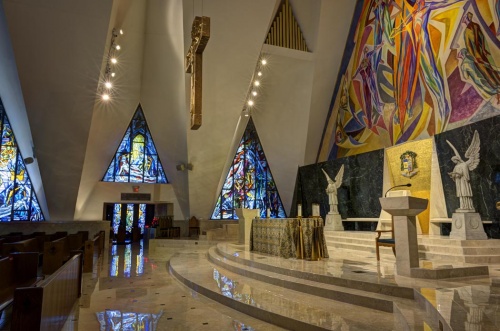
n the history of 20th century Nevada, Morris Barney Dalitz is often called “Mr. Las Vegas” for his efforts to shape the city into a modern metropolis. A Detroit transplant, Moe was a legendary bootlegger, racketeer and early investor in the Las Vegas gaming industry. After it was revealed in a 1950s Senate hearing that Dalitz was a top man in various crime syndicates, he decided to improve his public image and became an active philanthropist. Using his own money along with union pension funds, he underwrote the construction of the Sunrise Hospital, Las Vegas Country Club and made large donations to the Las Vegas Public Library System. He kept a California public relations firm on his payroll to inform the Las Vegas community of his on-going efforts to help his adopted city. (Nevada Journal online, 1996) In 1961 he donated land and funds to build the Paul R. Williams’ designed Guardian Angel Shrine for the Catholic Diocese of Reno-Las Vegas.
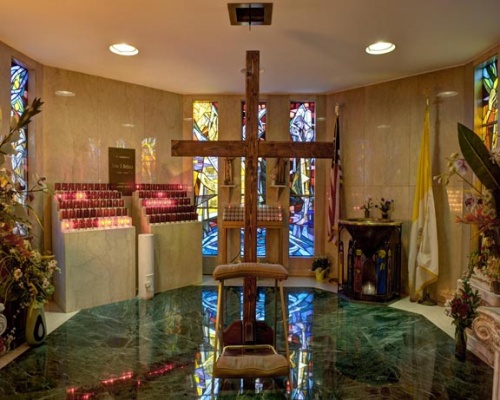
Dalitz and Williams' Las Vegas relationship may date to the merger in the late 50s of the Royal Nevada with its neighbor on the Strip the Stardust Hotel. The Williams' and John Replogie designed Royal Nevada, built in 1955, was one of the last low profile hotels. The Stardust was one of the largest with 1000+ rooms, the largest pool and the largest casino in Nevada. The smaller complex was ultimately consumed by the giant "star and planet" themed hotel. Familar with the Williams' work on the Royal Nevada, Dalitz approached the architect with his plan to help the Catholic Diocese and replace their recently razed home church—St. Viator.
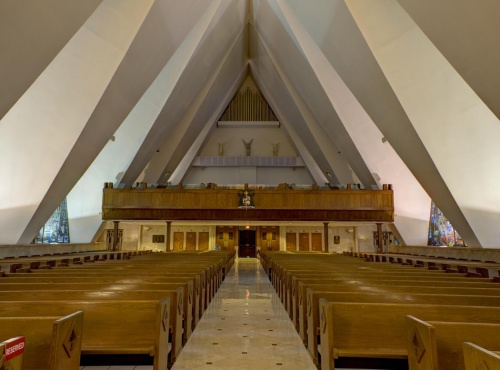
When St. Viator was built in 1955 on the site of the former the city dump, the land proved to be unstable. Within 6 months of completion St. Viator was condemned and torn down. Churchless, Reverend Richard Crowley, approached Dalitz to donate land on the Strip. The idea of a conveniently located Catholic church for his casino workers appealed to the Jewish Dalitz. In 1961 he donated land near the Desert Inn and by October 1963 Guardian Angel Shrine held its first mass. Acknowledging the building's importance to the community, Bishop Norman McFarland designated the Guardian Angel Shrine and a newly constructed St. Viator co-cathedrals for the Diocese of Reno-Las Vegas in 1977. (Las Vegas Sun, September 17, 2005)
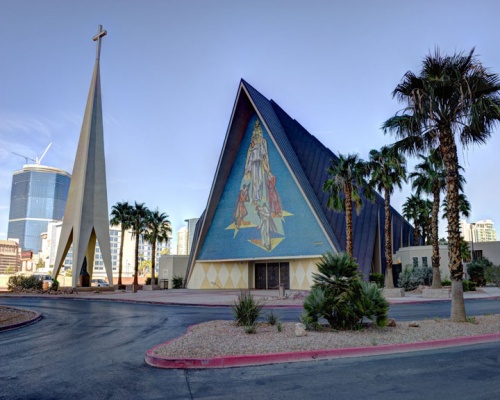
Paul R. Williams’ use of the dramatic A-frame design was the perfect choice for the building’s Strip location. With seating for 1100 congregants, the building easily holds its own against the glitz, glamour and neon of the surrounding hotels and casinos. A large, colorful mosaic over the entrance by Los Angeles artist Edith Piczek represents the Guardian Angel with three figures: Penance, Prayer and Peace. A second mural above the main alter depicts the Guardian surrounded by “swooping angels.” Stained glass windows by Isabel Piczek were installed in the twelve triangular recesses bisecting the A-frame. Each window illustrates a Station of the Cross with gambling themes illustrating the story. (Danny and Rose Marie Thomas donated funds for Window XII.) The sisters describe their combined aesthetic as Mystic Realism, an art form “that will communicate in inner levels never touched before…ending in happiness—your happiness. The real artwork is not made from glass, paint or tile” but is found within the viewer. (A personal note from the artists on the Roman Catholic Diocese of Las Vegas web site,
2005)
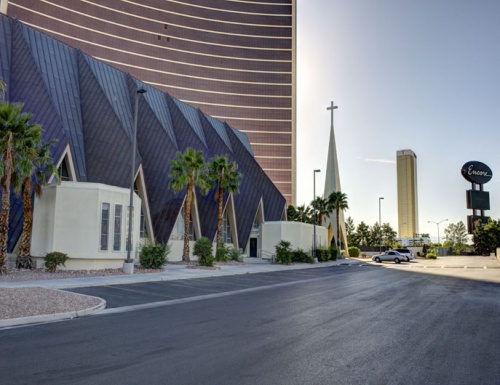
At the time of construction the Los Angeles Times (January 6, 1963) interviewed the shrine's lighting engineer, Michael J. Garris, a client and colleague of Williams, about the lighting and power system. "The indirect lighting system is unusual, according to Garris. It conceals extremely narrow and shallow troffers which give the interior an overall light value of 15 ft. candle power. Lighting was used to highlight the mosaic wall mural at the front of the church and behind the altar." The lighting creates the sense of peace and contemplation Garris and Williams envisioned in their original design. (images 4 and 6)
The Guardian Angel Cathedral was renovated in 1995 for $1.3 million, a tribute to the building's importance. While the Cathedral no longer attracts many employees from nearby casinos, it is popular with tourists.
A website The Mystery Worshipper provides one visitor's impressions of attending a 2001 worship service in the Guardian Angel Cathedral.
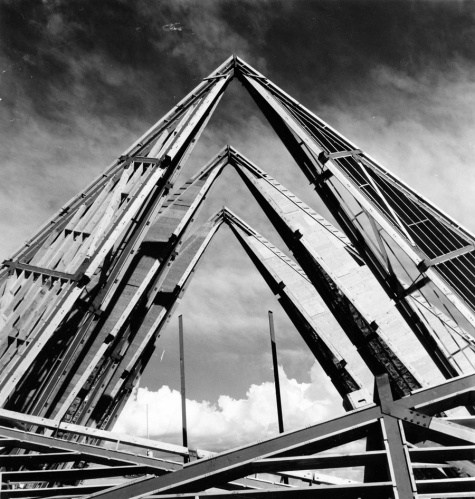
Special thanks to the University of Nevada Las Vegas Architecture Studies Library for their help. For more information visit their website: www.library.unlv.edu/arch
http://www.paulrwilliamsproject.org/gallery/guardian-angel-cathedral-las-vegas-nv/

n the history of 20th century Nevada, Morris Barney Dalitz is often called “Mr. Las Vegas” for his efforts to shape the city into a modern metropolis. A Detroit transplant, Moe was a legendary bootlegger, racketeer and early investor in the Las Vegas gaming industry. After it was revealed in a 1950s Senate hearing that Dalitz was a top man in various crime syndicates, he decided to improve his public image and became an active philanthropist. Using his own money along with union pension funds, he underwrote the construction of the Sunrise Hospital, Las Vegas Country Club and made large donations to the Las Vegas Public Library System. He kept a California public relations firm on his payroll to inform the Las Vegas community of his on-going efforts to help his adopted city. (Nevada Journal online, 1996) In 1961 he donated land and funds to build the Paul R. Williams’ designed Guardian Angel Shrine for the Catholic Diocese of Reno-Las Vegas.

Dalitz and Williams' Las Vegas relationship may date to the merger in the late 50s of the Royal Nevada with its neighbor on the Strip the Stardust Hotel. The Williams' and John Replogie designed Royal Nevada, built in 1955, was one of the last low profile hotels. The Stardust was one of the largest with 1000+ rooms, the largest pool and the largest casino in Nevada. The smaller complex was ultimately consumed by the giant "star and planet" themed hotel. Familar with the Williams' work on the Royal Nevada, Dalitz approached the architect with his plan to help the Catholic Diocese and replace their recently razed home church—St. Viator.

When St. Viator was built in 1955 on the site of the former the city dump, the land proved to be unstable. Within 6 months of completion St. Viator was condemned and torn down. Churchless, Reverend Richard Crowley, approached Dalitz to donate land on the Strip. The idea of a conveniently located Catholic church for his casino workers appealed to the Jewish Dalitz. In 1961 he donated land near the Desert Inn and by October 1963 Guardian Angel Shrine held its first mass. Acknowledging the building's importance to the community, Bishop Norman McFarland designated the Guardian Angel Shrine and a newly constructed St. Viator co-cathedrals for the Diocese of Reno-Las Vegas in 1977. (Las Vegas Sun, September 17, 2005)

Paul R. Williams’ use of the dramatic A-frame design was the perfect choice for the building’s Strip location. With seating for 1100 congregants, the building easily holds its own against the glitz, glamour and neon of the surrounding hotels and casinos. A large, colorful mosaic over the entrance by Los Angeles artist Edith Piczek represents the Guardian Angel with three figures: Penance, Prayer and Peace. A second mural above the main alter depicts the Guardian surrounded by “swooping angels.” Stained glass windows by Isabel Piczek were installed in the twelve triangular recesses bisecting the A-frame. Each window illustrates a Station of the Cross with gambling themes illustrating the story. (Danny and Rose Marie Thomas donated funds for Window XII.) The sisters describe their combined aesthetic as Mystic Realism, an art form “that will communicate in inner levels never touched before…ending in happiness—your happiness. The real artwork is not made from glass, paint or tile” but is found within the viewer. (A personal note from the artists on the Roman Catholic Diocese of Las Vegas web site,
2005)

At the time of construction the Los Angeles Times (January 6, 1963) interviewed the shrine's lighting engineer, Michael J. Garris, a client and colleague of Williams, about the lighting and power system. "The indirect lighting system is unusual, according to Garris. It conceals extremely narrow and shallow troffers which give the interior an overall light value of 15 ft. candle power. Lighting was used to highlight the mosaic wall mural at the front of the church and behind the altar." The lighting creates the sense of peace and contemplation Garris and Williams envisioned in their original design. (images 4 and 6)
The Guardian Angel Cathedral was renovated in 1995 for $1.3 million, a tribute to the building's importance. While the Cathedral no longer attracts many employees from nearby casinos, it is popular with tourists.
A website The Mystery Worshipper provides one visitor's impressions of attending a 2001 worship service in the Guardian Angel Cathedral.

Special thanks to the University of Nevada Las Vegas Architecture Studies Library for their help. For more information visit their website: www.library.unlv.edu/arch
http://www.paulrwilliamsproject.org/gallery/guardian-angel-cathedral-las-vegas-nv/
_________________
We don't care the People Says , Rock 'n' roll is here to stay - Danny & the Juniors - 1958
 Re: Guardian Angel Cathedral - Las Vegas
Re: Guardian Angel Cathedral - Las Vegas
_________________
We don't care the People Says , Rock 'n' roll is here to stay - Danny & the Juniors - 1958
 Re: Guardian Angel Cathedral - Las Vegas
Re: Guardian Angel Cathedral - Las Vegas
http://www.roadarch.com/modarch/nvchurch.html
The Guardian Angel Cathedral was built in 1963. It was designed by Paul Williams who also designed the La Concha Motel which is just a few blocks away.
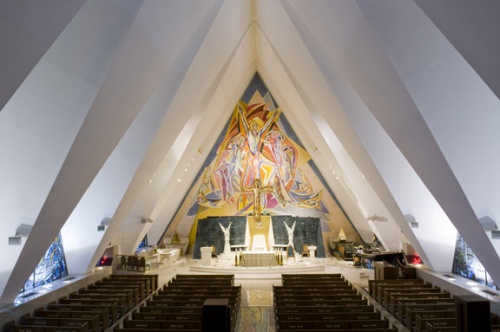

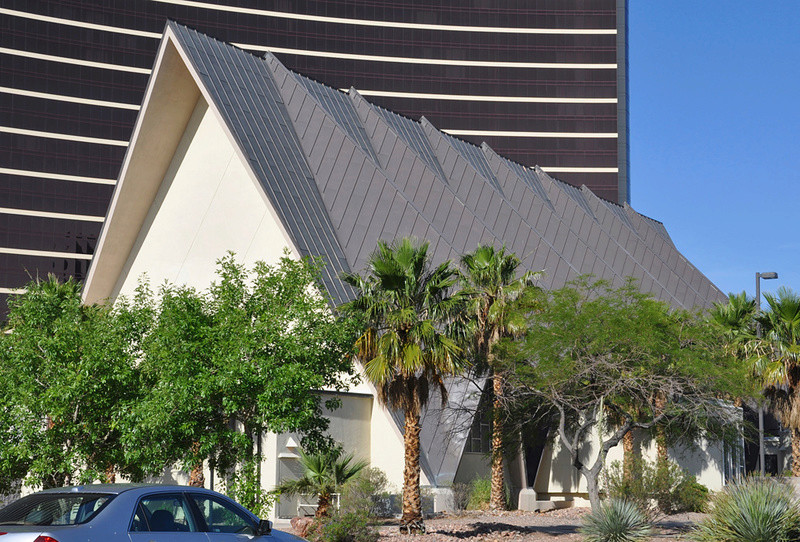
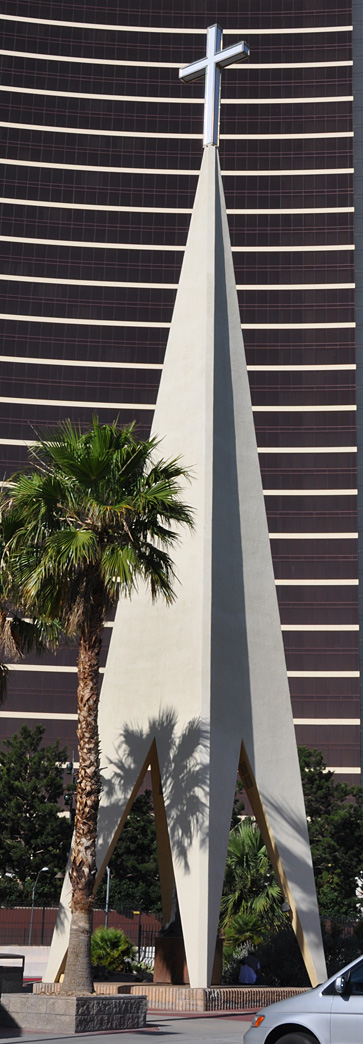
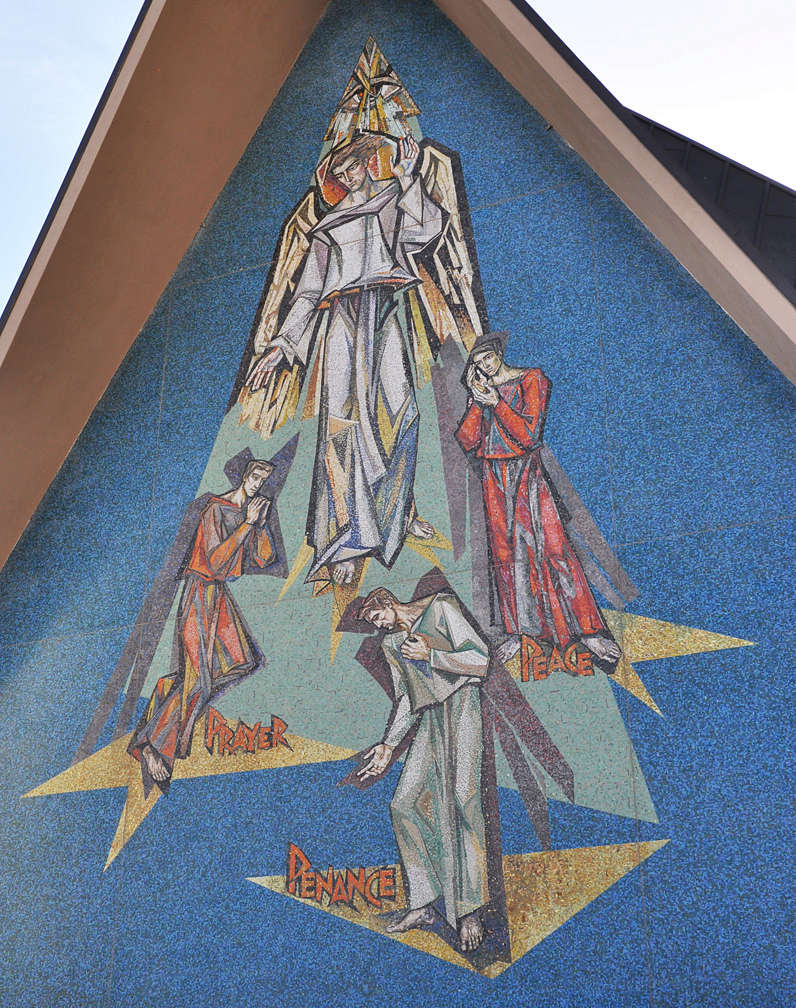
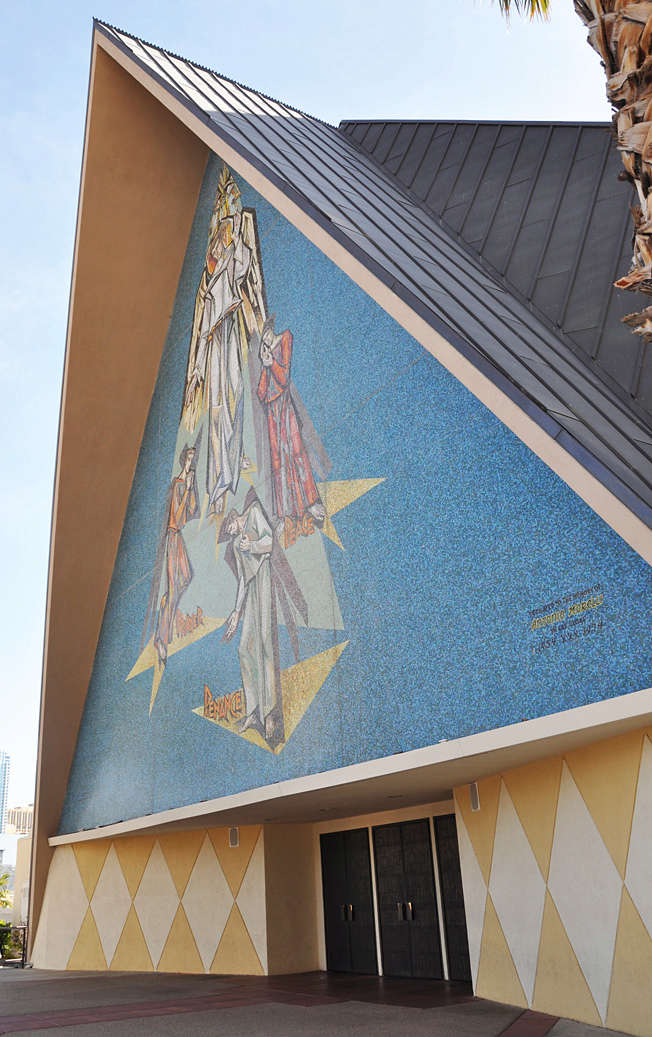
The Guardian Angel Cathedral was built in 1963. It was designed by Paul Williams who also designed the La Concha Motel which is just a few blocks away.






_________________
We don't care the People Says , Rock 'n' roll is here to stay - Danny & the Juniors - 1958
 Re: Guardian Angel Cathedral - Las Vegas
Re: Guardian Angel Cathedral - Las Vegas
_________________
We don't care the People Says , Rock 'n' roll is here to stay - Danny & the Juniors - 1958
 Re: Guardian Angel Cathedral - Las Vegas
Re: Guardian Angel Cathedral - Las Vegas
_________________
We don't care the People Says , Rock 'n' roll is here to stay - Danny & the Juniors - 1958
 Re: Guardian Angel Cathedral - Las Vegas
Re: Guardian Angel Cathedral - Las Vegas
_________________
We don't care the People Says , Rock 'n' roll is here to stay - Danny & the Juniors - 1958
 Re: Guardian Angel Cathedral - Las Vegas
Re: Guardian Angel Cathedral - Las Vegas
_________________
We don't care the People Says , Rock 'n' roll is here to stay - Danny & the Juniors - 1958
 Re: Guardian Angel Cathedral - Las Vegas
Re: Guardian Angel Cathedral - Las Vegas
_________________
We don't care the People Says , Rock 'n' roll is here to stay - Danny & the Juniors - 1958
 Sujets similaires
Sujets similaires» Cathedral of Saint Mary of the Assumption - 1971 - San Fransisco - architects John Michael Lee, Paul A. Ryan and Angus McSweeney
» Ric "Ángel" Arlandi
» Charlie Gracie
» Records with car or motorbike on the sleeve - Disques avec une moto ou une voiture sur la pochette
» Viva Las Vegas 2011
» Ric "Ángel" Arlandi
» Charlie Gracie
» Records with car or motorbike on the sleeve - Disques avec une moto ou une voiture sur la pochette
» Viva Las Vegas 2011
Traditional Kustom Hot Rod and Vintage Culture and design :: Architecture: mid century modern, Googie, Art deco :: Church, Chappel (eglises et lieux de culte) mid century modern, googie art deco 1940 -1950 - 1960
Page 1 sur 1
Permission de ce forum:
Vous ne pouvez pas répondre aux sujets dans ce forum
 Connexion
Connexion


